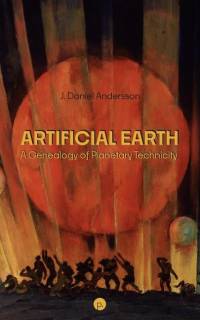Om Artificial Earth
Artificial Earth: A Genealogy of Planetary Technicity offers an intellectual history of humanity as a geological force, focusing on a prevalent contradiction in the Anthropocene discourse on global environmental change: on the one hand, it has been argued that there are hardly any pristine environments anymore, to the degree that the concept of nature has lost its meaning; while on the other, that anthropogenic environmental change has become so prevailing that it ought to be conceived of as a force of nature, in the literal sense of the expression. Artificial Earth argues that to fully grasp the stakes of this discourse, we need not only understand the contemporary scientific and technological transformations behind the Anthropocene, but also explore the history of an ontological concern tied up with it.In order to do so, Artificial Earth examines reflections on the ontological dualism between nature and artifice within the history of earth science from the late eighteenth century onwards. Paying particular attention to its consequences for how human subjectivity has been conceptualized in the Anthropocene, it then enrolls these resources in an effort to problematize attempts since the 1980s to formalize earth science in systems theoretical terminology. In sum, the aim is to investigate the historical conditions for the possibility of conceiving human artifice as an integral part of the earth's terrestrial environment, with the conviction that such an investigation may assist in resolving the aforementioned contradiction or at least to understand it better by tracing its historical lineage. J. Daniel Andersson is a post-doctoral researcher at the Department for Thematic Studies, Linköping University. His research interests lie at the intersection between the technical cultures, political imaginaries, and historical processes that have shaped the ways in which the global environment has been understood and valued. A general fascination with how concepts and discursive vocabularies become solidified in scientific modes of organization has consistently informed his theoretical and methodological approaches. He has previously written about, for instance, the relationship between future-orientation and valuation in integrated assessment models, climate engineering as a sociotechnical imaginary, and the intellectual history of risk management in global change science. His writing has appeared in journals such as Environment & Planning, Anthropocenes, and Cosmos & History.
Visa mer

